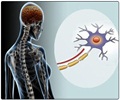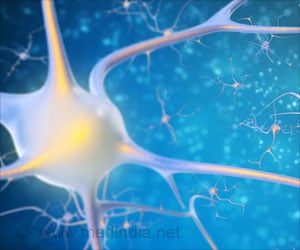A molecule triggered by running can help repair certain kinds of brain damage in animal models, revealed researchers.

‘A molecule, called VGF nerve growth factor, is triggered by running and can help repair certain kinds of brain damage in animal models.’





"We are excited by this discovery and now plan to uncover the
molecular pathway that is responsible for the observed benefits of VGF,"
said Dr. Picketts, senior author of the paper and a senior scientist at
The Ottawa Hospital and professor at the University of Ottawa. "What is
clear is that VGF is important to kick-start healing in damaged areas
of the brain."The team made this discovery while studying mice genetically modified to have a small cerebellum, the part of the brain that controls balance and movement. These mice had trouble walking and lived only 25 to 40 days.
However, if these mice were given the opportunity to run freely on a wheel, they lived over 12 months, a more typical mouse lifespan. The running mice also gained more weight and acquired a better sense of balance compared to their sedentary siblings. However, they needed to keep exercising to maintain these benefits. If the running wheel was removed, their symptoms came back and they did not live as long.
Looking at their brains, the researchers found that the running mice gained significantly more insulation in their cerebellum compared to their sedentary siblings.
To find out why running was causing this insulation, the team looked for differences in gene expression between the running and sedentary mice and identified VGF as a prime candidate. VGF is one of the hundreds of molecules that muscles and the brain release into the body during exercise. It also has an anti-depressant effect that helps make exercise feel good.
Advertisement
"We saw that the existing neurons became better insulated and more stable," said Dr. Matías Alvarez-Saavedra, the lead author on the paper. "This means that the unhealthy neurons worked better and the previously damaged circuits in the brain became stronger and more functional."
Advertisement
"We need to do broader research to see whether this molecule can also be helpful in treating multiple sclerosis and other neurodegenerative diseases," said Dr. Picketts.
Source-Eurekalert















